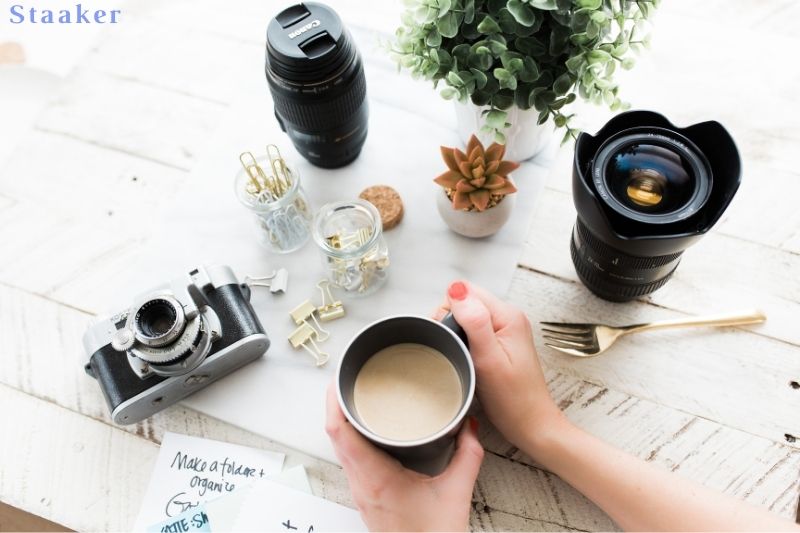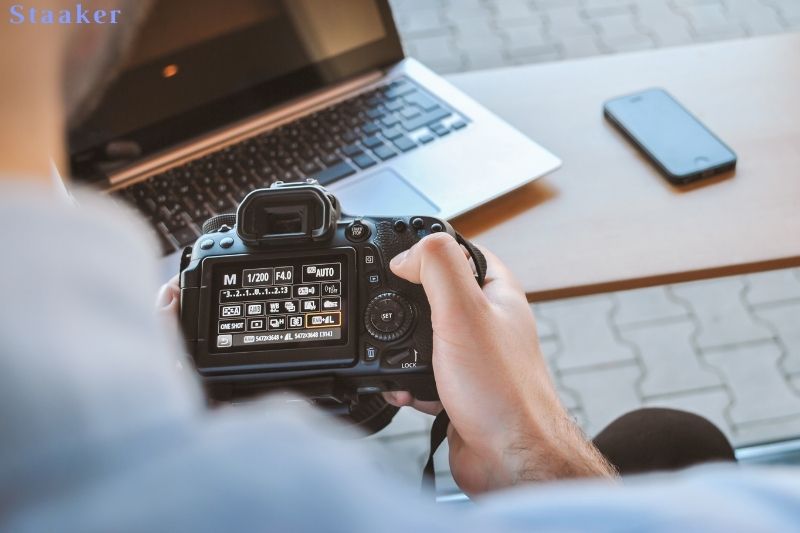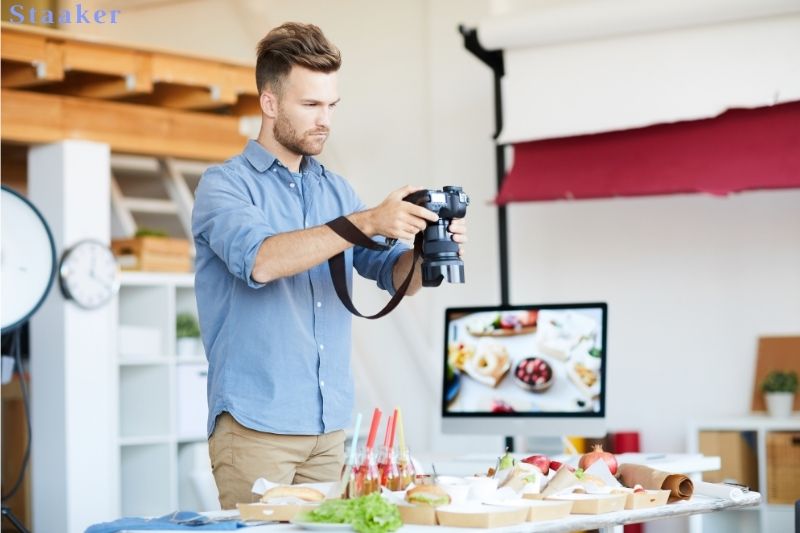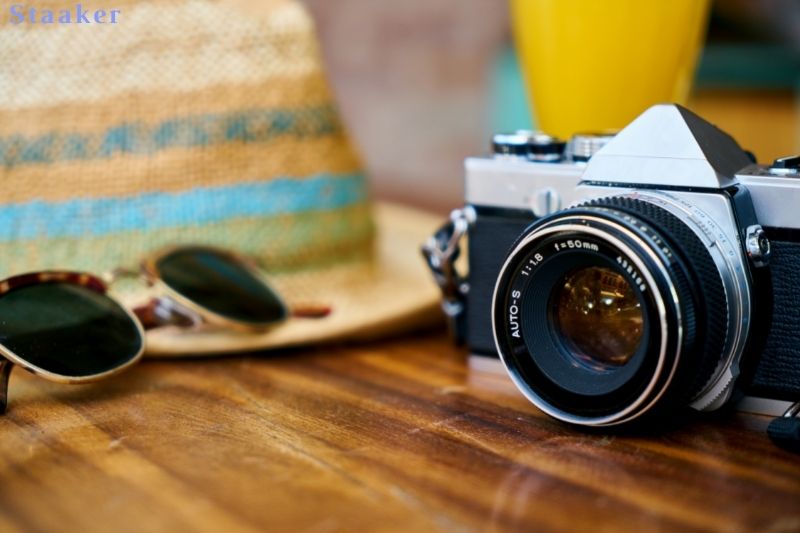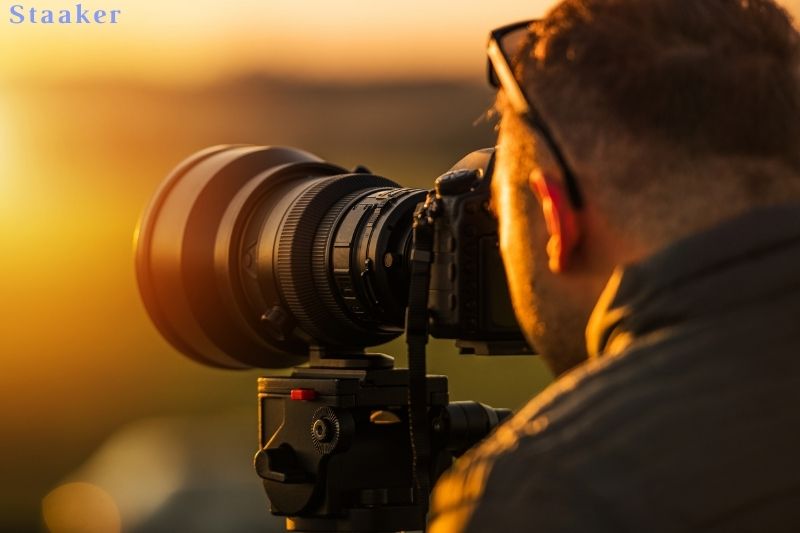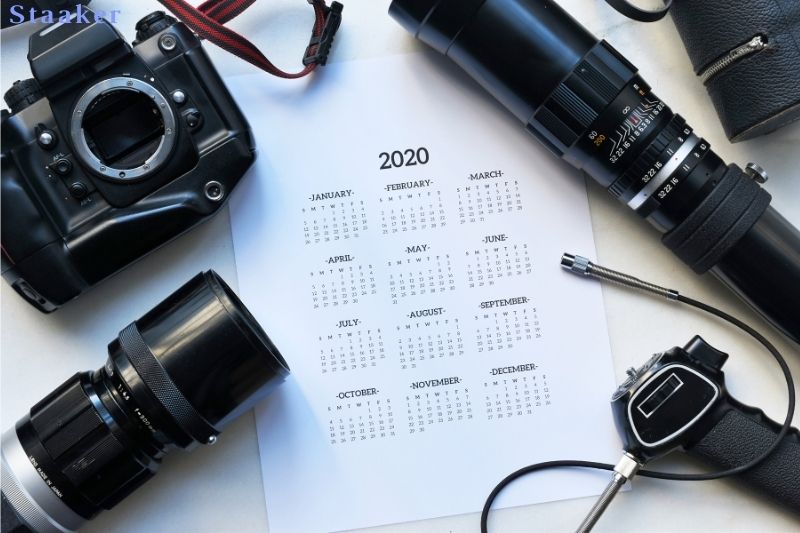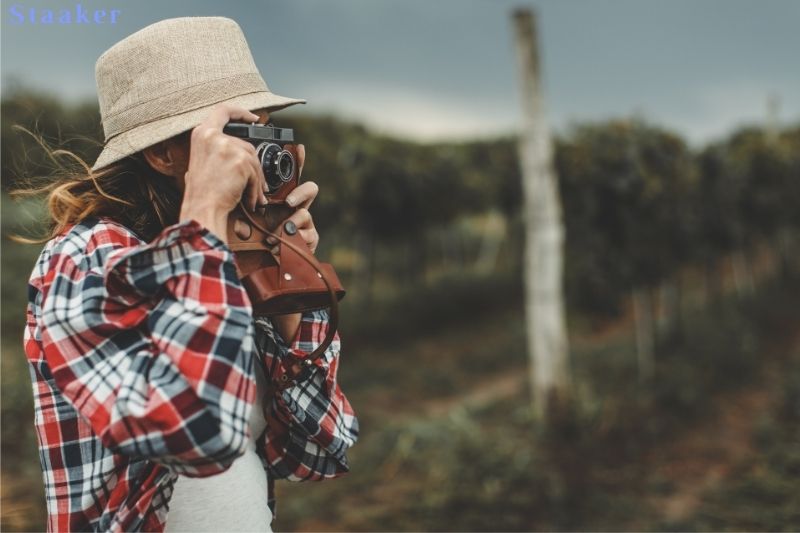A love of photography can start with simply taking pictures with a phone or a point-and-shoot camera, but getting into photography as a hobby or profession has more to learn.
This guide will give some tips on how to get into photography, from learning the basics of composition to choosing the right camera gear.
Essential Gear Checklist
Getting the correct equipment is the first and most crucial step for a pre-professional who wants to pursue a career in photography. Investing in a fantastic professional camera is only part of the equation. This list of essential equipment will assist you in getting started in professional photography:
1. Correct Lenses
Working with the correct lens will result in great images and help you develop your photography and gain client trust. Prime lenses have a fixed focal length that cannot be zoomed in or out.
These lenses could help you produce better quality images with less diffraction by providing a sharper focus on your subject. A zoom lens allows you to adjust focus length. It expands your creative possibilities. A zoom lens with a big aperture, on the other hand, can be more expensive.
2. A Tripod
Tripods are portable devices that can stabilize, raise, and support your flash unit, camera, and other videography gear while taking pictures. They come with three legs and a mounting head that you can use with your camera to help you shoot more stable photos.
3. A Hand-Held Speed Light
While photographing in low-light situations, you could utilize an on-camera speed light to provide additional light to your subjects. They’ll help you acquire more balanced exposures during the day and improve the performance of your camera when taking pictures.
4. Memory Cards and an External Hard Drive
When shooting outside your studio, you might utilize an external hard drive and memory cards to store and transfer photographs more easily. They are inexpensive, allow instant access to data, and make transferring entire data folders easy.
5. Reflector Discs That Collapse
All professional photographers should have collapsible reflector discs on hand. They allow you to manipulate the light surrounding your subject, increasing the quantity of light and filling in shady spots.
6. Neutral Density Filters
With wide-aperture lenses and ND filters, you may photograph in bright light without overexposing your subject. When shooting in lighting circumstances that surpass your camera’s shutter speed capabilities, they provide selectable focus and shallow depth of field.
7. Cleaning Materials
All necessary cleaning materials for your camera, lens and other equipment are soft-bristled brushes, an air blower, a cleaning solution, cleaning wipes, and a microfiber cloth. Proper cleaning tools protect your camera and other equipment while maintaining optimal performance. Check out our comprehensive guide to cleaning your camera’s lens.
8. Color Checkers
You’ll need color checkers with graduated hues to get correct readings of your white balance settings when planning your photos.
9. Backdrops for photography
The best recommendation for learning how to go into photography is to take your first lesson in a photography studio. Studio photography lessons can help you become more familiar with your camera while also playing with light, exposure, and shadows. If you want the most significant outcomes, you’ll need to employ photographic backdrops.
Photography backgrounds are an easy way to add creativity and quality to your studio photography projects. Various materials, such as cloth, paper, canvas, muslin, velvet, and even vinyl, can be used. There are numerous options to pick from and the opportunity to experiment and generate new ideas.
If you have a lot of passion for photography, this guide will provide some information: When Was The Camera Invented
How To Get Into Professional Photography
1. Look for motivation
Do you find yourself snapping a lot of portraits? Do you like abstract art or beautiful landscapes? Maybe you’d want to start photographing events? Or do you want to photograph everything that catches your eye? Keep whatever inspired you to pursue photography and use it as motivation to grow and pursue your newfound love.
Finding your inspiration might be as simple as figuring out what you already enjoy doing. You can start as a vacation photographer if you enjoy traveling. You can also try action and sports photography if you want sports. Feel free to experiment with different forms of photography that may pique your interest!
2. Purchase a high-quality camera
The only thing you need to start taking those stunning stills is an excellent camera once you’ve figured out what you want your subject to be. Amateur photographers today are fortunate to have access to a wide range of cameras. In terms of image quality and pricing, there was a big gap between compact point-and-shoot cameras and more professional DSLR cameras just a few years ago.
Anyone interested in studying photography can now buy an affordable mid-pro mirrorless camera that is lightweight and capable of producing professional, magazine-quality photographs. Whatever camera you choose, make sure you understand how to use it and that it is appropriate for your style of photography.
The best camera is the one you carry with you, as the saying goes.
3. Carefully compose
Quality usually takes precedence over quantity in photography. Taking hundreds of photos does not make you a photographer, especially if the photographs aren’t well-planned. Take a few moments to observe the situation, correctly focus on your subject, and carefully frame your photo before holding the camera up to your face and pressing the shutter.
Don’t just take pictures of everything—KISS, as the professionals say (Keep It Simple, Stupid). Use that viewfinder properly. A simple tilt or shift of the camera to the right can add a story and appeal to a photo. If you pay attention to the fundamentals of photography composition, you’ll rapidly discover the most incredible scene to picture.
4. Switch to manual mode
When getting to know your camera, you should make the most of your hard-earned cash by overcoming your fear of the unknown and going full manual. You may need to devote a significant amount of time to grasp better camera functions and capabilities, particularly the exposure triangle (Aperture, Shutter Speed, and ISO), but the benefits are worthwhile and visible in your photographs.
Changing your settings manually brings up a world of creative possibilities and visual outputs. Going manual is the way to go if you want to create images with stunning, fuzzy backgrounds and spectacular night shots.
5. Participate in a workshop
Even if you don’t have a camera or aren’t particularly interested in amateur photography, you may learn from photography classes or tutorials. Workshops cover everything from basic camera settings to advanced professional lighting and photo processing topics.
Apart from getting down to the nitty-gritty, it provides a whole new perspective on photography and what makes a photo visually appealing. It is, without a doubt, the best alternative for obtaining a proper and comprehensive photography education.
6. Acquire the ability to read light
Light is one of the most critical aspects that may make or destroy a photograph. As a result, a photographer needs to understand how to make the most of it. To take well-exposed shots, you can use ambient light—like diffused sunshine or any existing indoor lighting—but learning to position your subject or adding additional light sources can give your photos a new touch and feel.
When you’re just getting started and don’t have access to light modifiers (studio lights) or slave flashes, it helps to be able to “read” the direction of light and manipulate it manually with props like reflectors and DIY light filters to create beautiful highlights, shadows, and silhouettes within a scene.
7. Get moving
The most exemplary teacher is always an experience. You can study and fiddle with your camera settings all you want, but the only way to truly learn photography is to carry your camera around and set aside time to shoot.
After all, what better way to put everything you’ve learned into practice than by getting out and capturing pictures? When you keep your camera within reach during your leisure time and schedule shooting events with fellow photographer pals, you’ll be astonished at how much you’ll learn about your camera and artistic ability.
8. Take it slowly
Learning and improvement take time, just like any other activity or vocation. Rushing to become a professional would put you under unneeded stress as an amateur shooter, but it will also prevent you from enjoying what you do. Don’t try to be like other more experienced shooters or buy expensive equipment you won’t be able to use for a long time.
Before going large or asking for talent fees, take your time to learn everything you can, experiment, and perhaps even establish your unique filming style.
9. Upgrade your equipment
After you’ve mastered shooting in full manual mode with your camera, you’ll want to advance and increase the quality of your images. Wide aperture lenses are ideal for adding better focus to your subject and boosting the quality of your background blur (or bokeh).
Aside from different lenses, you might want to invest in external flashes for when there’s not enough ambient light, a handy tripod for shooting at slower shutter speeds, or even a battery handle that gives you more juice for more extended shooting.
10. Look for a mentor.
Find someone who can inspire you in addition to discovering your inspiration. This individual might be a workshop instructor, a friend, or anybody you know who has been photographing for a long time. A mentor may teach you camera and photography tricks, share learning experiences, and answer any questions you might have to help you better your photography.
You can also shadow your mentor to see their work environment and how they execute their shots, and perhaps even help out with specific second-shooter responsibilities to get more expertise.
You’ll have the honor of passing on your knowledge and mentoring another amateur photographer someday.
11. Take on a picture challenge
Photography challenges are a great way to get outside your comfort zone and experiment with new genres. You’ll immediately come across a photographic challenge if you’re a photography club member or engage in internet photography forums.
One week’s task, for example, might be to shoot something in black and white. Another challenge may require you to submit only photos taken with a 50mm — or nifty fifty — lens.
If you find yourself photographing very similar subject matter or approaches, challenges can help you break out of a “photography creative rut.” As you broaden your horizons, you can discover that you appreciate specific styles or subjects you hadn’t previously considered.
12. Enroll in a class or take an online course
There are online courses available for almost anything these days. Photography is no different. You may learn at your speed and from the convenience of your own home with online photography courses. Many classes also provide options for submitting your work for photo critiques, which can be an excellent method to improve your photography.
While there are numerous free workshops available, including our own Photography 101 series, several outstanding paid ones are also available. Skillshare.com is a website where you can get well-organized classes given by professional photographers in various subjects. Please take advantage of their free trial period of one month.
13. Learn how to edit photos
The saying goes that capturing the image is only half the battle. The other part is editing correctly. The way you modify a photograph can drastically alter its atmosphere or feel. It can make a good image unforgettable.
There are numerous photo editing styles available; all you have to do is discover your own. Photoshop is the industry standard for image editing. Follow our guide on how to Photoshop a photo in a few simple steps if you’re a newbie.
Editing is an art form in and of itself, and learning some of the most known methods may be beneficial. They’ll give you a foundation to develop your unique vision.
14. Make a backup of your photos and categorize them.
Don’t forget to organize and back up your photographs as you develop your style, learn Photoshop, and take a lot of shots. Using key terms and separating them in a way that you find helpful is a fundamental part of an organization (for example, by date).
Many programs, such as Lightroom, can categorize photographs by faces and locations using artificial intelligence. Although this is beneficial, creating your method is still strongly advised. Make sure to include it in your photography and editing process.
After that, you should think about backing up your photographs. Physical and online backups are both recommended. Physical backups should also be stored in multiple locations to defend against theft, fire, and natural catastrophes.
15. Practice, practice, and more practice
There are many laws and ideas involved in photography, but you wouldn’t be much of a photographer if you didn’t put them to use.
Taking photographs is the best method to learn about photography. Many people get stuck when they first start but don’t worry if this occurs to you; it’s very natural.
When you strive to remember everything you’ve read and learned, something you used to like becomes more difficult.
You end up doing nothing when you start overthinking things. Just remind yourself that making a mistake is very typical. That is the only way to learn.
If you don’t know set a timer on your phone camera, this guide is for you: How To Set Timer On Iphone Camera
FAQs
Can I learn to picture by myself?
You certainly can. You will, however, require sufficient ambition, determination, and discipline. A basic understanding of exposure, dynamic range, and image noise is needed for photography. You should also develop your artistic side. Yes, you can train yourself in photography, but doing it in a classroom or group setting may be faster, easier, and more enjoyable. We’ve supplied various educational resources to get you started.
It would help if you kept in mind that there are numerous aspects to studying photography, each of which needs your attention. Equipment, composition, editing approaches, and styles, to name a few, must all be considered.
Is it difficult to break into the field of photography?
It will need the commitment to study the craft, money to purchase appropriate equipment, and time to identify and refine your drive/passion. This is true whether you want to be a serious hobbyist or a professional photographer.
The first step is to get out there and start shooting to see what is about photography that piques your interest. Is it the composition, the fact that it allows you to travel and see the world in a new light, or the unique manner you can alter the photographs after they’ve been recorded that makes them special?
As a photographer, how can I make money?
We’ve looked at various ways to generate money as a photographer. In essence, there are multiple options for earning a living through photography. You can sell your photographs to stock photography sites, for example. You can start a photography blog or channel on YouTube.
You can also sell your prints or work for magazines or newspapers as a freelance photographer. These are only a few techniques, some of which are more complex than others.
Full-time photographers typically earn between $30,000 and $75,000 a year, though some earn significantly more. Many photographers prefer to start part-time and work their way up to full-time after assessing whether photography is financially viable as a vocation. Hopefully, the advice provided above has shown you how to pursue photography as a serious hobby or career.
There are several ways to improve your photography after you get started. Take your time, develop your style, and you’ll be extending and learning in no time.
Conclusion
Getting into photography can be a fun and rewarding hobby, but learning the basics and getting started takes some effort. Following these tips maybe help you are on your way!
Staaker.com hopes you find this helpful!


